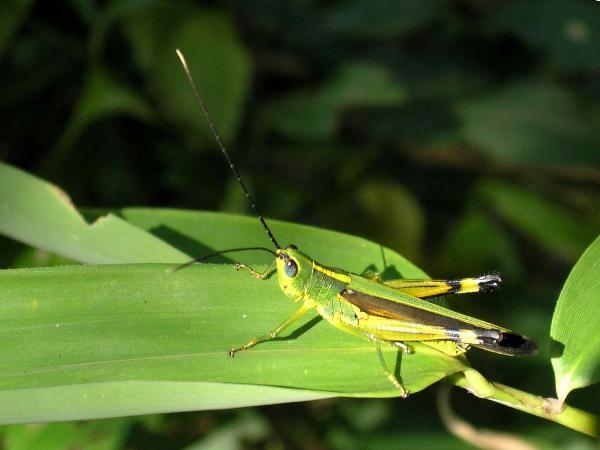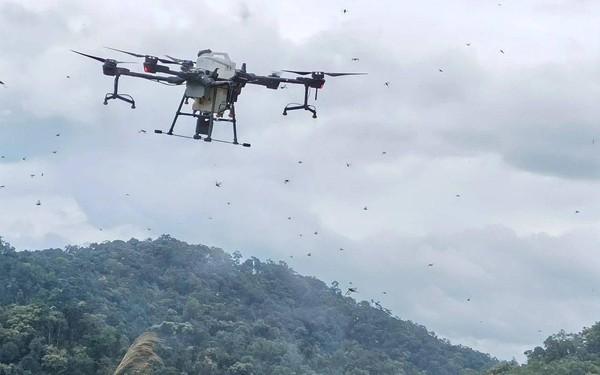According to media reports, a large-scale locust plague occurred in Yunnan. As of July 12, the cumulative area of the locust plague in Pu'er has been close to 120,000 mu. A large number of crops have been eaten by locusts. The local area is actively carrying out locust killing work! This locust is not raging in Africa and South Asia, why did it come from Yunnan?

Where did the locusts come from, and how harmful are they?
Since the beginning of this year, locust plagues have been attacked by desert locusts from eastern Africa to the Arabian Peninsula, as well as Iran, Pakistan and India. The green leaves of crops disappeared instantly, leaving only a bare main pole! But this is only the beginning, because the desert locust will lay eggs wherever it goes, and after three months after the swarm, a larger swarm will come back!

The horrific locust plague in East Africa
Therefore, from mid-2018 to mid-2020, the insect swarms have been repeated in these areas, and they have not been able to clean up! So do the locust swarms in Yunnan come from the desert locusts that are raging in India? totally not! According to media reports, the locust population that is damaging Yunnan is the yellow ridge bamboo locust, which is a type of locust that mainly damages bamboo. Of course, it will also eat corn and rice!

Where does the yellow ridge bamboo locust come from?
On June 28, the media reported that the yellow-ridged bamboo locusts in Laos were invading Yunnan. For more than half a month, it has been detected that the northward migration of insects has crossed the border! According to the Lao Daily News, in May, yellow ridged bamboo locusts that were hatching were found in more than 34 areas in Fonsari City, Laos. The villagers actively rescued themselves, and the government provided a large amount of pesticides to farmers to control locusts! According to the Vientiane Daily News, Laos was first discovered in Phong Thon County, Luang Prabang Province, Laos in October 2014. In that year, locust plagues were found in more than 140 areas. Since then, there has been an explosive growth trend every year. To 500 regions, 640 in 2016!

This year’s insect plague was hatched by the eggs left in the ground in previous years. In March, locusts were found in many places to hatch. After April 29, the area’s corn, sweet corn and 24.1 hectares of sweet corn were hatched. Corn was eaten by locusts in the nymph stage! It takes 4 months for the yellow ridge bamboo locust to reach the adult stage! Therefore, the insect swarms that entered Yunnan, China from the end of June to the beginning of July, were the pioneers that hatched relatively early in March, and the locusts that hatched in mid-to-late April are on their way. The future may be a large-scale invasion of locust swarms!

We have the most powerful plant protection drone group in the world. Can we completely control the pests without spreading?
On July 7th, the area affected by the yellow ridge bamboo locust was only 80,000 mu. It expanded to 120,000 mu in 5 days, an increase of almost 10,000 mu per day. However, with the increase of time, the “armed forces in various parts of Yunnan” "I am quickly throwing into the eradication of locusts!

Locust killer: plant protection drone
Xinhuanet reported on July 13 that the Pu'er City Forestry and Grassland Bureau and Yunnan Senye Aviation Technology Co., Ltd. have cooperated and dispatched 15 DJI T-series plant protection drones and 20 operators to spray and kill locusts. The work of the liquid medicine, "You can see the effect in 30 minutes, and the yellow-backed bamboo locust starts to poison and drop."

Compared with manual spraying, drones are much more efficient. Each plant protection drone can control more than 1,000 acres of farmland every day! Starting on the 9th, the plant protection drones have been deployed for a week. The local prevention and quarantine bureau has monitored where there is an insect pest, there will be drones! "After seeing the effect, the local government felt that drones were good for locust control. Now drones are basically used to eliminate locusts, with artificial spraying as an aid."

So far, there have been more than 30,000 mu of flying control operations, and the density of locusts has dropped significantly, and the control effect is relatively significant!
What is the key to controlling the swarm?
As mentioned above, it seems that the yellow spine locusts in Yunnan have been brought under control. Is everything going well? It seems totally impossible, because according to the incubation period of the yellow-spine bamboo locust, it will be about March-April, so subsequent large numbers of yellow-spine bamboo locusts may continue to invade Yunnan northward!
The more serious situation is that Laos has relatively weak technical strength to control locusts, so it is difficult to control the yellow-spine bamboo locust to enter Yunnan. Therefore, the achievements at this stage still cannot let us sit back and relax, but we must closely monitor the yellow spine. The movement of bamboo locusts, when necessary, it may be necessary to assist the Lao people to carry out locust elimination work!


